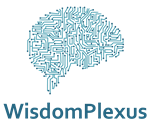Remember when analyzing your business data meant expensive servers, complicated software installations, and calling IT every time something broke? Those days are fading fast. It is anticipated that the global cloud analytics market will grow to a value of about $205.51 billion by 2034.
It has transformed how companies turn their mountains of information into actionable insights, making sophisticated data analysis accessible without the traditional infrastructure headaches.
Imagine transferring your whole data operation from a small office basement to a cutting-edge facility run by professionals. The only difference is that this facility is virtually present, scalable instantaneously to meet your needs, and you only pay for what you use. This approach eliminates many barriers. Those kept powerful analytics capabilities out of reach for organizations without dedicated data teams and massive IT budgets.
What is Cloud Analytics?
Cloud analytics represents the convergence of two transformative technologies: cloud computing infrastructure and sophisticated data analytics tools, delivered through a service-based model. Rather than processing data locally on your own hardware, such platforms leverage distributed computing resources to handle everything.
It handles data storage and ETL (Extract, Transform, Load) operations and advanced analytical processing and visualization – all accessible through web browsers or APIs. This architecture eliminates the traditional constraints of on-premises solutions, such as storage limitations, processing bottlenecks, and version compatibility issues.
Cloud analytics environments typically feature pre-configured data warehouses, real-time processing engines like Apache Spark or Snowflake, and visualization layers. This frees up business teams to concentrate on insights rather than system maintenance or integration issues.
Types of Cloud Analytics
Public cloud: Your data and workloads run on the provider's infrastructure alongside other customers (logically separated, of course), which reduces costs through economies of scale. You're working within the provider's framework, potentially dealing with data residency issues and slightly less control over performance optimization. Rapid deployment and minimal upfront investment make this option perfect for most small to mid-sized analytics initiatives.
Private cloud: Organizations with stringent regulatory requirements will find this strategy appealing. For example, legacy systems that don't work well with public cloud architectures. Financial institutions and healthcare providers often choose this path, implementing solutions like Cloudera Data Platform Private Cloud. You'll maintain greater control over every aspect of your analytics ecosystem and face higher costs.
Hybrid cloud: This model distributes analytics workloads between public and private environments based on specific requirements. Sensitive customer data might remain in your private cloud while compute-intensive seasonal analytics jobs scale out to public resources during peak periods. Implementation involves data virtualization layers, unified governance frameworks, and orchestration tools like Kubernetes to create seamless workflows across environments.
How Cloud Analytics Works?
The multi-layered architecture of cloud analytics starts with the intake of raw data from many sources via pipelines and APIs. This data is arranged, compressed, and optimized for analytical workloads rather than transactional processing as it moves into storage tiers like data lakes or cloud data warehouses.
The processing layer manages the majority of the computational effort. Distributed computing frameworks that parse queries over numerous nodes for concurrent execution are used. Modern platforms leverage columnar storage formats, in-memory processing, and query optimization engines that can handle petabyte-scale datasets without breaking a sweat.
Through self-service interfaces that are accessible from any location, interactive dashboards, and data visualization tools, the presentation layer provides insights. Simple trend reports and sophisticated predictive models are made possible with low latency. It's possible by front-end components' communication with back-end services using RESTful APIs.
Listing the Benefits of Cloud Analytics
Cost Efficiency: Cloud analytics shifts the financial model from capital-intensive infrastructure investments to consumption-based operational expenses. Businesses may scale resources up or down according to real consumption patterns. They can get rid of software license issues, maintenance overhead, and server acquisition cycles.
Democratized Data Access: Cloud platforms break down traditional data silos through centralized repositories and self-service interfaces accessible to non-technical teams. Marketing managers and operations leads can explore data directly without submitting IT tickets, which accelerates decision cycles.
Accelerated Innovation: Cloud providers continuously introduce cutting-edge capabilities like machine learning operations (MLOps), natural language querying, and automated insight generation. The multi-year upgrade periods that characterize traditional analytics platforms are eliminated. This happens as your analytics environment changes in tandem with these advances through smooth upgrades.
What does the Future Hold?
Tomorrow, cloud analytics will blur the lines between data storage, analysis, and action through embedded analytics woven directly into business applications. Expect to see "zero-query analytics", where insights proactively surface without explicit requests, powered by contextual awareness of your business processes and goals.
The technical complexity will continue fading into the background in the upcoming time. Natural language interfaces become sophisticated enough for true conversational analytics. Their complex questions about your business data will feel as natural as chatting with a knowledgeable colleague. For organizations that embrace these capabilities, the competitive advantages will become increasingly difficult for analytics laggards to overcome.
For more informative content, visit WisdomPlexus!
Recommended For You:




